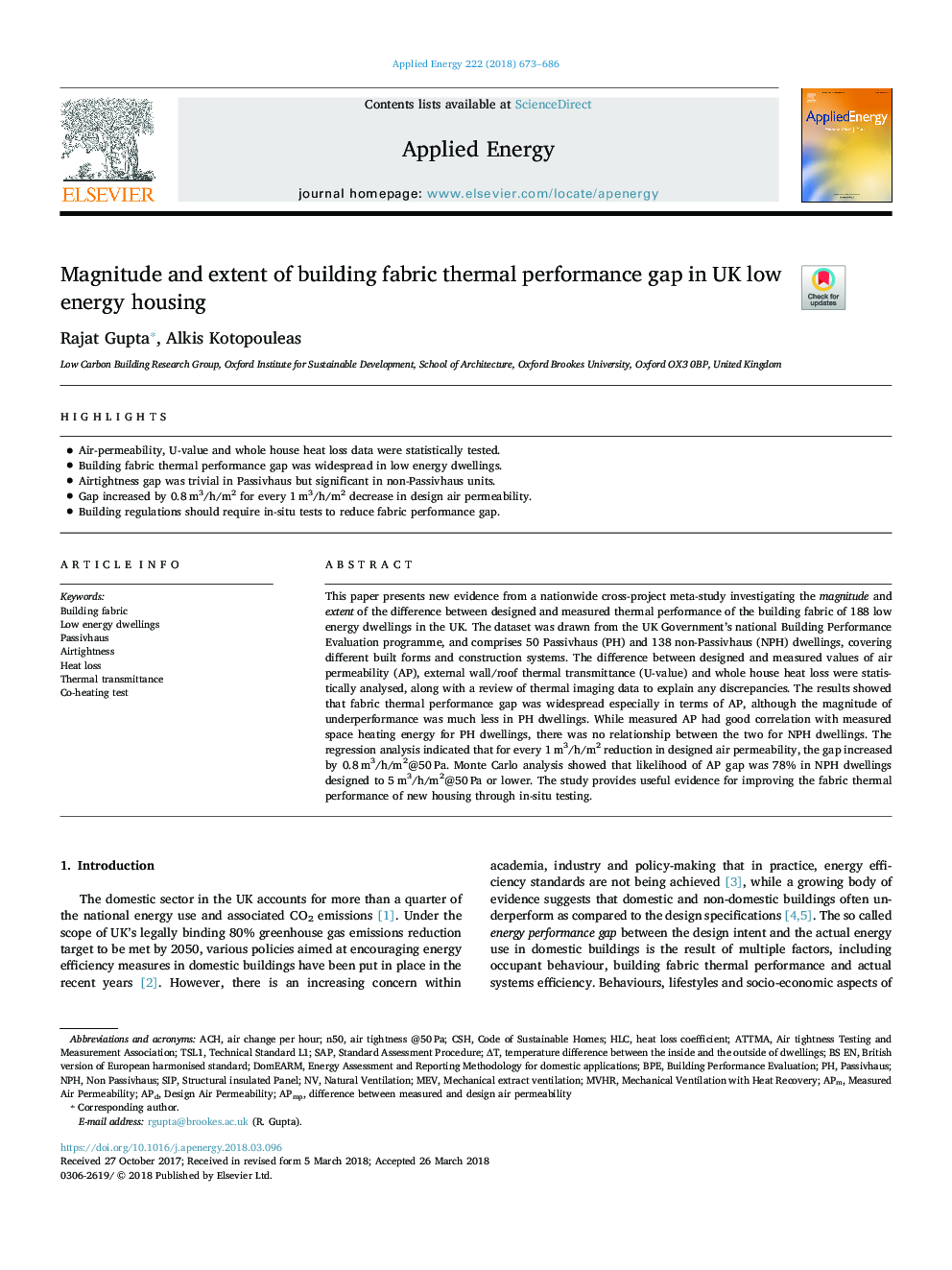| Article ID | Journal | Published Year | Pages | File Type |
|---|---|---|---|---|
| 6680146 | Applied Energy | 2018 | 14 Pages |
Abstract
This paper presents new evidence from a nationwide cross-project meta-study investigating the magnitude and extent of the difference between designed and measured thermal performance of the building fabric of 188 low energy dwellings in the UK. The dataset was drawn from the UK Government's national Building Performance Evaluation programme, and comprises 50 Passivhaus (PH) and 138 non-Passivhaus (NPH) dwellings, covering different built forms and construction systems. The difference between designed and measured values of air permeability (AP), external wall/roof thermal transmittance (U-value) and whole house heat loss were statistically analysed, along with a review of thermal imaging data to explain any discrepancies. The results showed that fabric thermal performance gap was widespread especially in terms of AP, although the magnitude of underperformance was much less in PH dwellings. While measured AP had good correlation with measured space heating energy for PH dwellings, there was no relationship between the two for NPH dwellings. The regression analysis indicated that for every 1â¯m3/h/m2 reduction in designed air permeability, the gap increased by 0.8â¯m3/h/m2@50â¯Pa. Monte Carlo analysis showed that likelihood of AP gap was 78% in NPH dwellings designed to 5â¯m3/h/m2@50â¯Pa or lower. The study provides useful evidence for improving the fabric thermal performance of new housing through in-situ testing.
Keywords
Related Topics
Physical Sciences and Engineering
Energy
Energy Engineering and Power Technology
Authors
Rajat Gupta, Alkis Kotopouleas,
